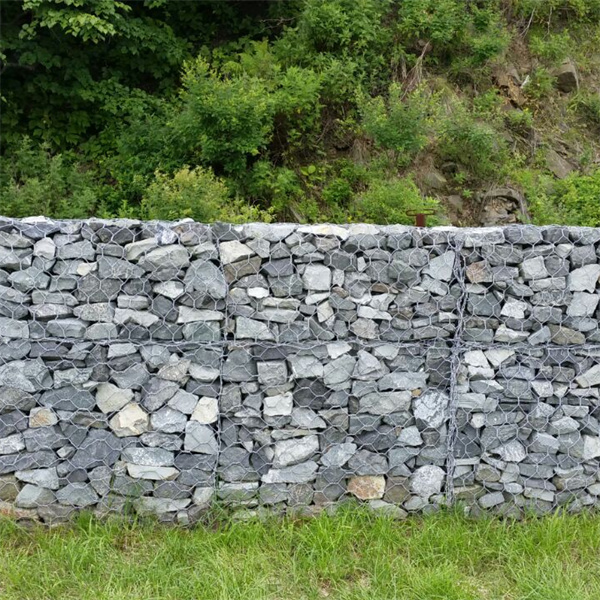ກ.ຍ. . 28, 2024 14:41 Back to list
Top Recommendations for Effective Gabion Revetment Solutions for Erosion Control
The Best Gabion Revetment A Sustainable Solution for Erosion Control
In an era where environmental concerns are paramount, finding sustainable and effective solutions for erosion control is crucial. One of the most innovative methods gaining popularity in civil engineering and landscape architecture is the use of gabion revetments. Gabion structures, which are wire mesh cages filled with rocks or other materials, offer a practical and eco-friendly approach to preventing soil erosion along riverbanks, coastlines, and steep slopes. This article explores the advantages of gabion revetments, their applications, and how they contribute to sustainable development.
Understanding Gabion Revetments
Gabion revetments consist of stacked stone-filled wire cages that create a barrier against water flow and soil movement. Their design allows for the natural integration of vegetation, making them adaptable to the surrounding environment. An essential advantage is their ability to absorb and dissipate the energy of flowing water, which helps to reduce erosion by minimizing wave impact and soil displacement.
Advantages of Gabion Revetments
1. Eco-Friendly Materials Gabions can be filled with locally sourced rock material, promoting the use of natural resources and reducing transportation emissions. This local sourcing minimizes the carbon footprint associated with construction, aligning with sustainable development goals.
2. Natural Aesthetics Unlike traditional concrete structures, gabion revetments blend seamlessly into the landscape. Over time, they can support the growth of grass and plants, further enhancing their natural appearance. This aspect makes them particularly appealing for projects in scenic areas or near recreational sites.
3. Cost-Effectiveness Gabion revetments are generally more affordable than concrete alternatives. Their construction is often simpler and requires less specialized labor, making them an economical solution for municipalities and developers alike. Furthermore, their durability means fewer repairs and replacements over time.
4. Flexible Design Options Gabions can be tailored to suit various site conditions and project requirements. They can be designed in different shapes and sizes, allowing for creative solutions in challenging terrains. This versatility makes them an attractive option for a wide range of projects, from residential landscaping to large-scale infrastructure.
best gabion revetment

5. Environmental Benefits By providing a habitat for aquatic life and promoting biodiversity along riverbanks, gabion revetments help protect ecosystems. The gaps between the rocks allow for water flow, which maintains aquatic habitats and encourages the growth of vegetation that stabilizes the soil.
Applications of Gabion Revetments
Gabion revetments are suitable for various applications, including
- Riverbank Stabilization They are commonly used to protect riverbanks from erosion, ensuring the integrity of adjacent land and preventing flooding. - Coastal Protection In coastal areas, gabion revetments help shield shorelines from wave action, safeguarding infrastructure and natural habitats.
- Steep Slope Stabilization In hilly regions, they can stabilize slopes and prevent landslides, making them ideal for roads and developments built on or near steep terrains.
- Recreational Landscaping Gabion walls can also be used decoratively in parks and gardens, creating seating areas or artistic installations, thereby combining function with aesthetics.
Conclusion
In conclusion, gabion revetments represent one of the best solutions for erosion control, providing a sustainable, cost-effective, and aesthetically pleasing alternative to traditional methods. As society continues to prioritize environmentally friendly practices, the adoption of gabion technology will likely increase, making it a vital component in the fight against erosion and a significant contributor to sustainable infrastructure development. By harnessing the power of nature through innovative design, we can create resilient landscapes that protect our environment and promote biodiversity for future generations.
-
HESCO Gabion Baskets for Coastal Erosion Prevention
NewsAug.22,2025
-
Longevity and Durability of River Rock Gabion Walls
NewsAug.22,2025
-
How to Integrate Gabion 3D Walls in Urban Planning
NewsAug.22,2025
-
Reno Mattress Gabion Applications in Civil Engineering
NewsAug.22,2025
-
How to Install Wire Mesh for Gabion Baskets Properly
NewsAug.22,2025
-
Best Materials for Filling a Chain Link Gabion
NewsAug.22,2025
-
Wire Mesh Thickness Impact on Gabion Wall Load Bearing
NewsAug.12,2025






